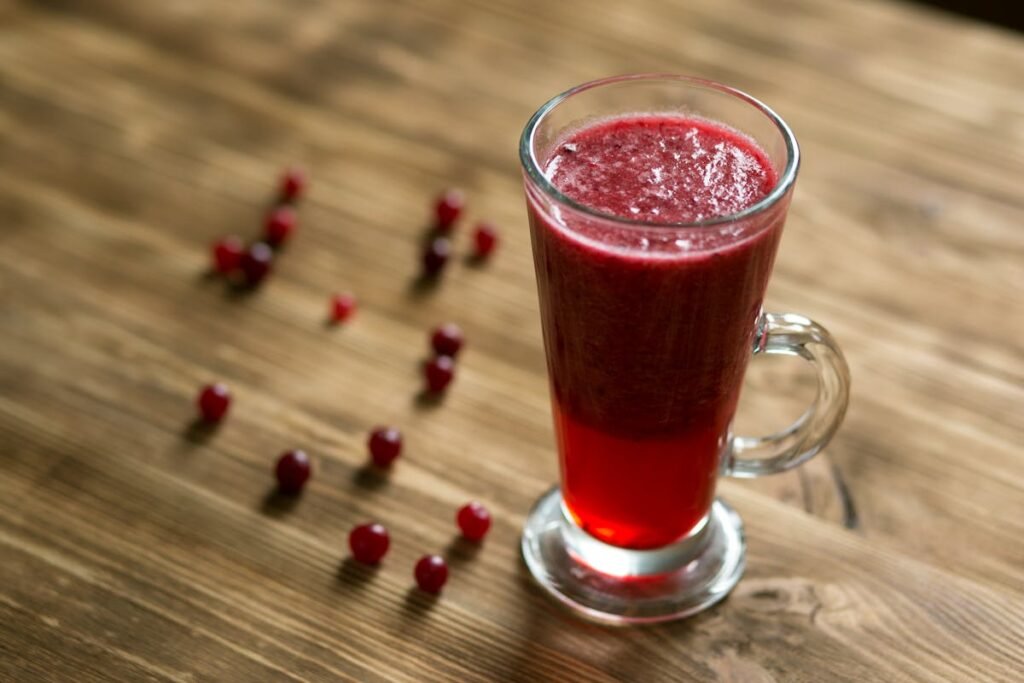Many women dread that time of the month when menstrual cramps creep in, turning daily life into an uncomfortable experience. But could relief be found in something as simple and natural as cranberry juice? This tart, ruby-red beverage, often praised for its role in urinary tract health, is gaining popularity as a potential home remedy for menstrual cramps. The question is worth exploring: does cranberry juice help with cramps?
The short answer is—it might. Let’s dive into how cranberry juice interacts with your body, especially during menstruation, and whether it’s worth pouring yourself a glass the next time cramps hit.
What Causes Menstrual Cramps?
Menstrual cramps, or dysmenorrhea, are caused by the contraction of the uterus as it sheds its lining. This process releases prostaglandins—hormone-like substances that trigger muscle contractions and inflammation. The higher the level of prostaglandins, the more severe the cramping tends to be.
Some people also experience back pain, bloating, and headaches along with cramps. Hormonal imbalances, stress, poor diet, and dehydration can all make symptoms worse.
Nutritional Composition of Cranberry Juice
Cranberry juice is rich in antioxidants, especially flavonoids, polyphenols, and vitamin C. These compounds help fight inflammation, support the immune system, and promote blood circulation. It also contains small amounts of calcium, magnesium, and potassium—minerals known for easing muscle tension and reducing menstrual discomfort.
Here’s a quick look at what 8 ounces of 100% pure cranberry juice offers:
| Nutrient | Amount |
|---|---|
| Vitamin C | 23.5 mg |
| Potassium | 195 mg |
| Magnesium | 5 mg |
| Calories | ~116 kcal |
| Sugars (natural) | ~30g |
| Antioxidants | High |
While it’s high in sugar (especially store-bought versions), the antioxidant content gives it some promising therapeutic potential.
Anti-inflammatory Effects of Cranberry Juice
One key reason to consider cranberry juice for cramps is its anti-inflammatory nature. Inflammation is a root cause of menstrual discomfort. Flavonoids in cranberries have been found to reduce inflammation by inhibiting the production of prostaglandins. By decreasing inflammation in the pelvic region, cranberry juice may provide indirect relief from painful cramps.
Cranberry Juice and Blood Flow Improvement
Cramps can also result from poor blood flow to the uterine muscles. The antioxidants in cranberry juice help dilate blood vessels, improving circulation. Better blood flow means less muscle tension and cramping. This is particularly helpful for those who feel cold or experience tightness in their lower abdomen during menstruation.
Hydration: A Surprising Factor in Cramp Relief
Dehydration can exacerbate menstrual cramps. Muscles—including the uterus—require adequate hydration to function smoothly. Cranberry juice, while not a substitute for water, helps you stay hydrated and offers additional nutrients. When you’re well-hydrated, your body flushes out toxins more efficiently, reducing bloating and pain.
Does Cranberry Juice Help with Cramps Specifically?
So, does cranberry juice help with cramps in a direct and measurable way? Scientific research is still emerging. While there’s limited direct evidence linking cranberry juice to menstrual pain relief, many of its properties—anti-inflammatory effects, nutrient content, and improved circulation—support its use as a complementary treatment.
In natural health communities and anecdotal reports, cranberry juice is often mentioned as a helpful drink during menstruation. Though it’s not a guaranteed cure-all, it certainly contributes to a healthier menstrual cycle when used alongside other self-care practices.
Comparing Cranberry Juice to Other Natural Remedies
| Natural Remedy | Benefits for Cramps |
|---|---|
| Cranberry Juice | Anti-inflammatory, hydrating |
| Ginger Tea | Reduces pain, anti-inflammatory |
| Chamomile Tea | Relaxes muscles, reduces stress |
| Bananas | High in potassium, prevents cramping |
| Dark Chocolate | Magnesium-rich, mood booster |
| Warm Compress | Relieves uterine contractions |
Each of these remedies works differently. Combining cranberry juice with these alternatives may offer enhanced relief during your period.
Best Time to Drink Cranberry Juice During Your Cycle
Timing can make a difference. Consider drinking cranberry juice a few days before your period begins and during the first 2-3 days of menstruation—when prostaglandin levels are at their peak. This strategy may help reduce inflammation before cramps become severe.
Cold vs. Warm Cranberry Juice: Does Temperature Matter?
Interestingly, warm drinks tend to soothe menstrual pain more effectively than cold ones. While cranberry juice is traditionally served chilled, warming it up slightly—or mixing it with herbal teas—might enhance its cramp-relieving effects. Warm fluids promote better blood circulation, which is essential for easing uterine contractions.
Choosing the Right Type of Cranberry Juice
Not all cranberry juices are created equal. Many store-bought options are loaded with added sugars and artificial flavors, which can counteract the benefits. Look for these:
-
100% Pure Cranberry Juice (unsweetened)
-
Organic and non-GMO certified
-
Low-sugar or no-sugar-added options
Mixing pure cranberry juice with a splash of water or a spoonful of honey can make it more palatable without sacrificing health benefits.
Cranberry Juice and Hormonal Balance
Though cranberries don’t directly affect estrogen or progesterone, their ability to detoxify the liver and support kidney function indirectly contributes to hormonal balance. A healthy liver metabolizes hormones more effectively, which may reduce the severity of PMS symptoms.
Common Myths About Cranberry Juice and Period Pain
Let’s clear up a few misconceptions:
-
Myth: Cranberry juice cures cramps.
-
Truth: It may help relieve them, but it’s not a cure-all.
-
-
Myth: Only water helps with hydration during your period.
-
Truth: Cranberry juice can support hydration with added nutrients.
-
-
Myth: You must drink large quantities for benefits.
-
Truth: One 8-ounce glass a day is often enough.
-
How to Incorporate Cranberry Juice into Your Period Routine
Start by adding a small glass to your breakfast or pairing it with snacks rich in magnesium and calcium. Here are some ideas:
-
Cranberry juice with whole-grain toast and almond butter
-
Cranberry smoothie with spinach and banana
-
Warm cranberry-ginger blend in the evening
Risks and Side Effects of Cranberry Juice
While generally safe, drinking too much cranberry juice may cause stomach upset or diarrhea, especially if you’re sensitive to acidity. Those on blood thinners like warfarin should consult a doctor, as cranberries can interact with medications.
Lifestyle Tips to Maximize Cramp Relief
To get the most out of cranberry juice:
-
Stay active with light exercise
-
Prioritize hydration (not just with juice!)
-
Limit processed and high-sugar foods
-
Use heating pads when necessary
-
Track your cycle to anticipate cramp onset
Personal Experiences with Cranberry Juice for Cramps
Many individuals have reported less bloating and smoother periods after adding cranberry juice to their routines. One woman shared that drinking it before her period helped minimize the onset of cramps and kept her energy up throughout the day.
Should You Try Cranberry Juice for Cramps?
Absolutely—especially if you’re seeking a gentle, natural remedy to complement other treatments. Though it’s not a magical solution, its benefits make it worth incorporating into your wellness routine.
Does Cranberry Juice Help with Cramps?
Yes, it can. While not a miracle drink, cranberry juice holds potential as part of a holistic approach to managing menstrual cramps. Its natural anti-inflammatory properties, nutrient profile, and hydration support contribute to its reputation as a helpful ally during your period.
Also read: Unlock Cacari Extract’s Full Potential for Skin, Immunity & More
FAQs
Is cranberry juice better than painkillers for cramps?
Not necessarily. While cranberry juice can support natural relief, it may not replace over-the-counter medication for severe pain.
Can cranberry juice make cramps worse?
If it’s high in added sugars or consumed in excess, it could increase bloating or cause stomach discomfort.
How much cranberry juice should I drink during my period?
One 8-ounce glass per day is a good start. Stick to unsweetened, pure cranberry juice for best results.
Can men drink cranberry juice for muscle cramps?
Yes. Its anti-inflammatory and hydrating benefits can help relieve general muscle cramps for anyone.
Are cranberry supplements as effective as the juice?
Supplements offer some benefits but lack hydration. Juice provides both fluid and nutrients.
What’s the best time of day to drink cranberry juice for cramps?
Morning or early afternoon is ideal to help with hydration and nutrient absorption throughout the day.
Conclusion
While more scientific research is needed, there’s promising evidence and anecdotal support suggesting that cranberry juice may ease menstrual cramps naturally. Its anti-inflammatory, antioxidant-rich profile makes it a worthy addition to your monthly self-care routine. Pair it with healthy lifestyle choices, and you might just find yourself reaching for cranberry juice every cycle.


